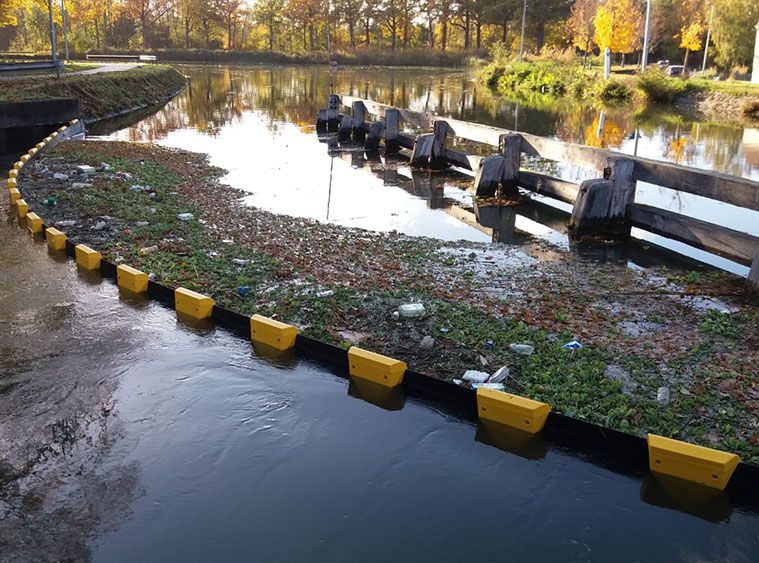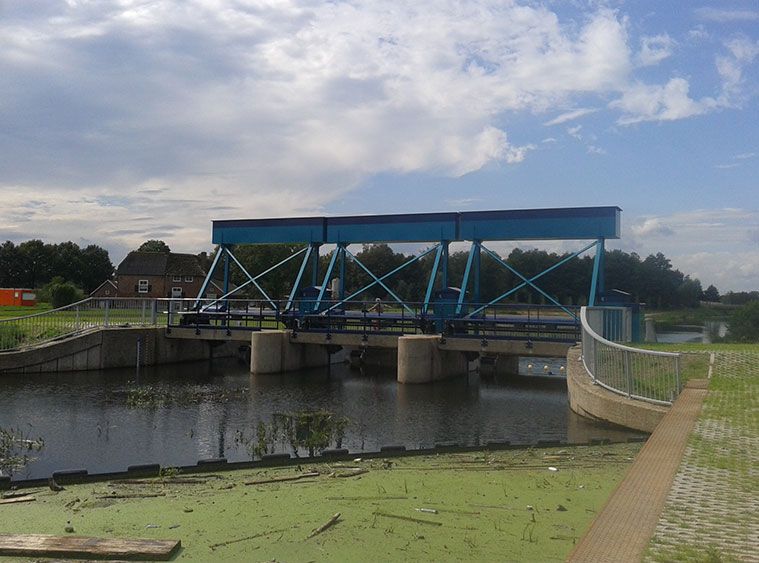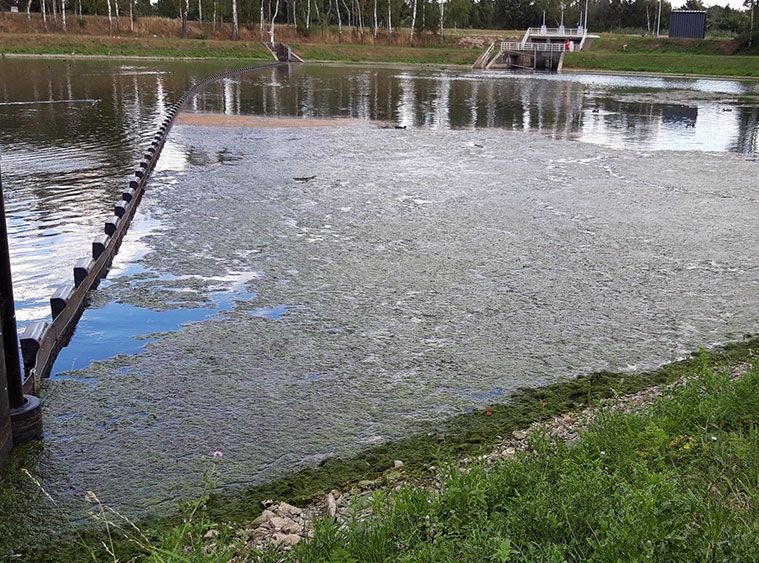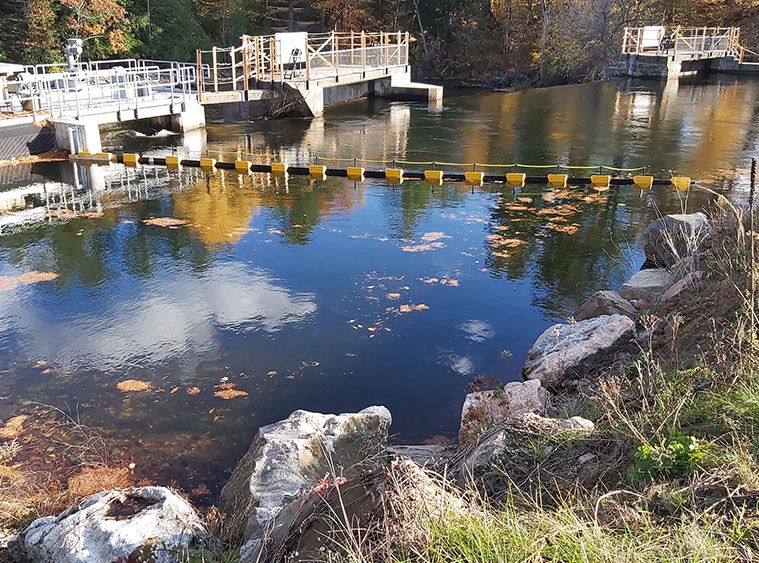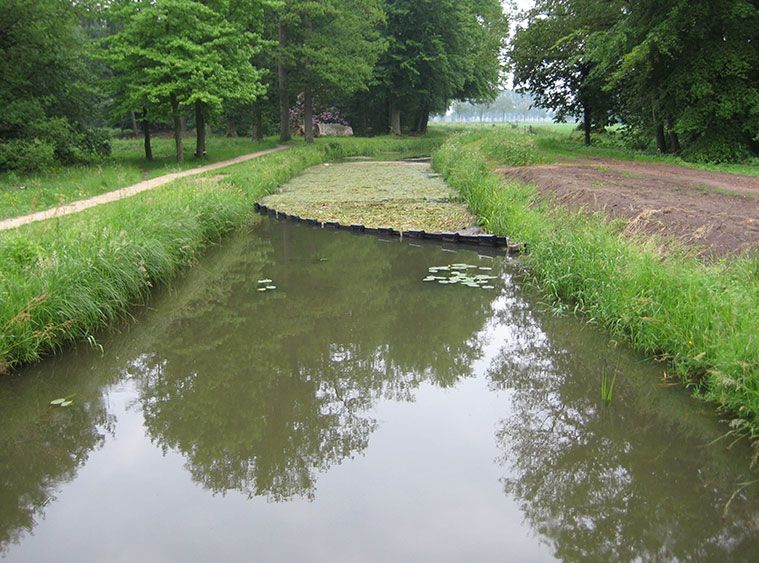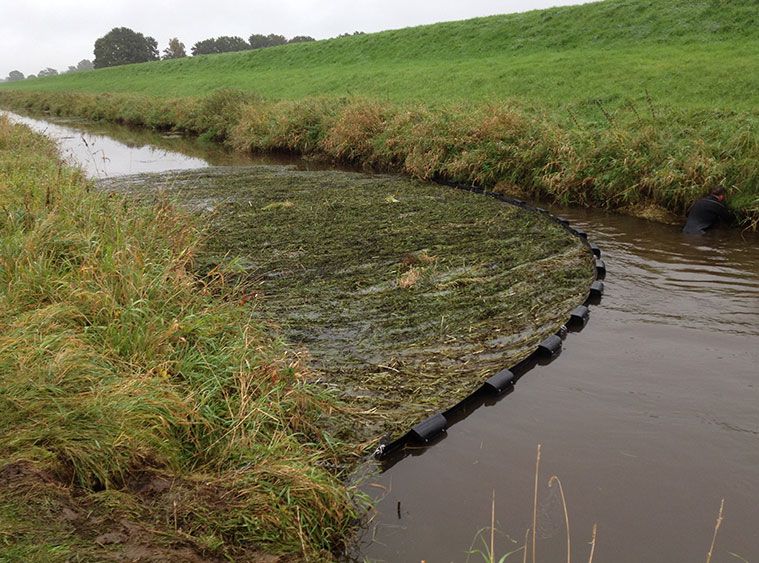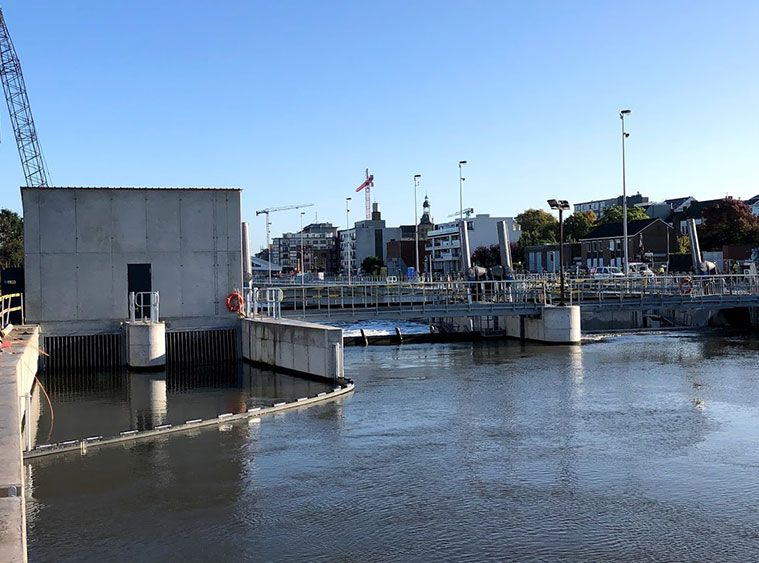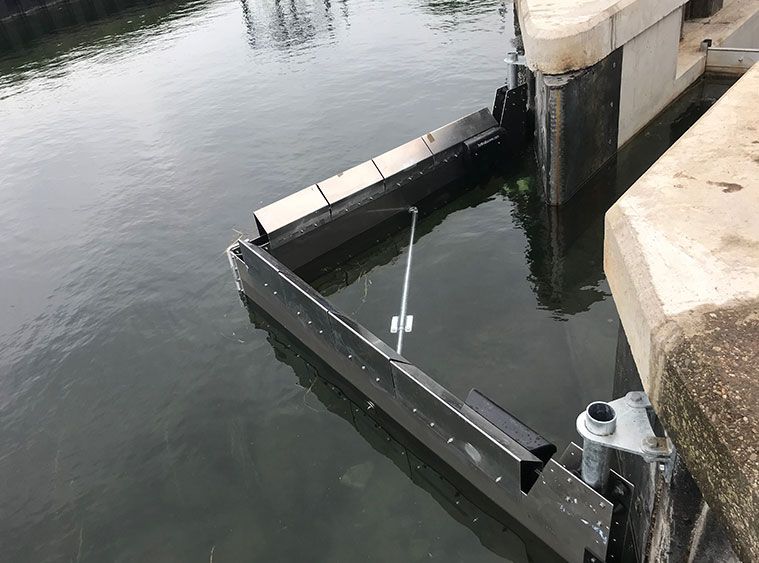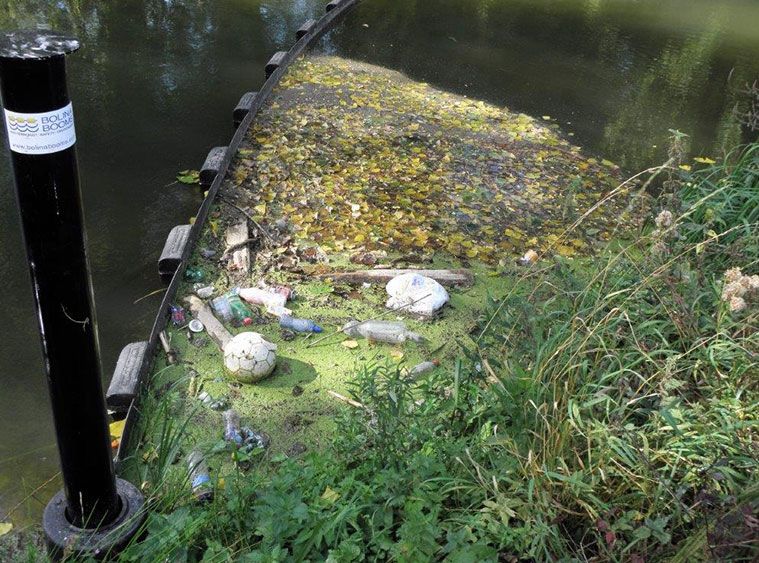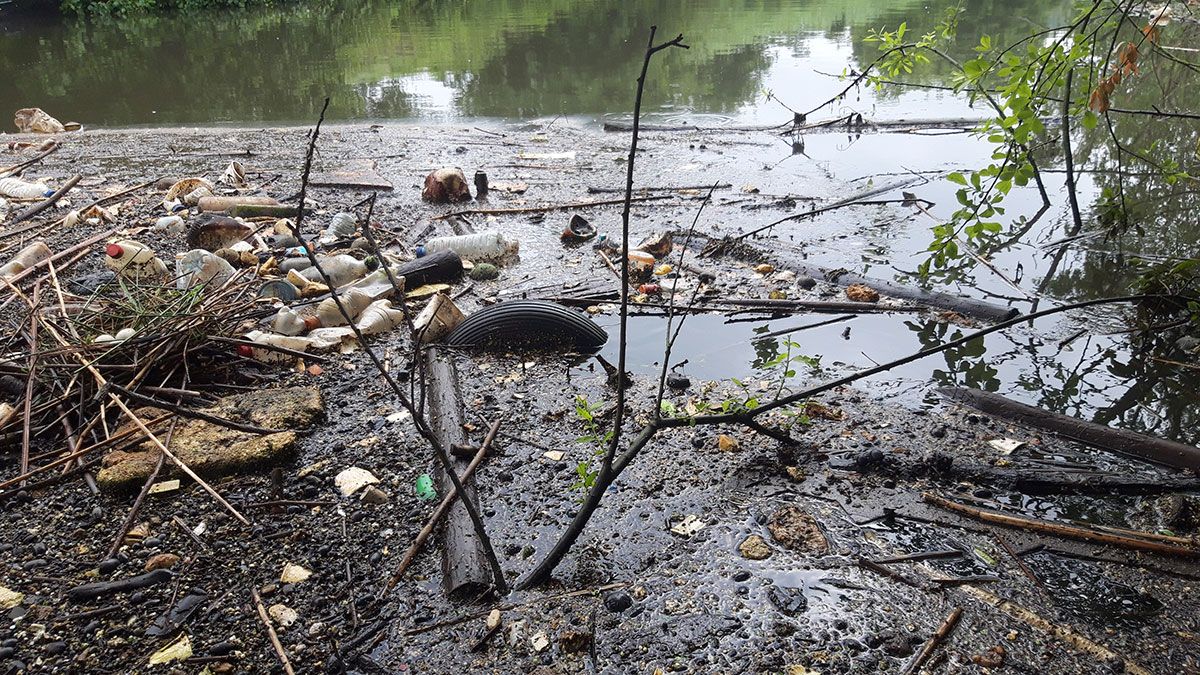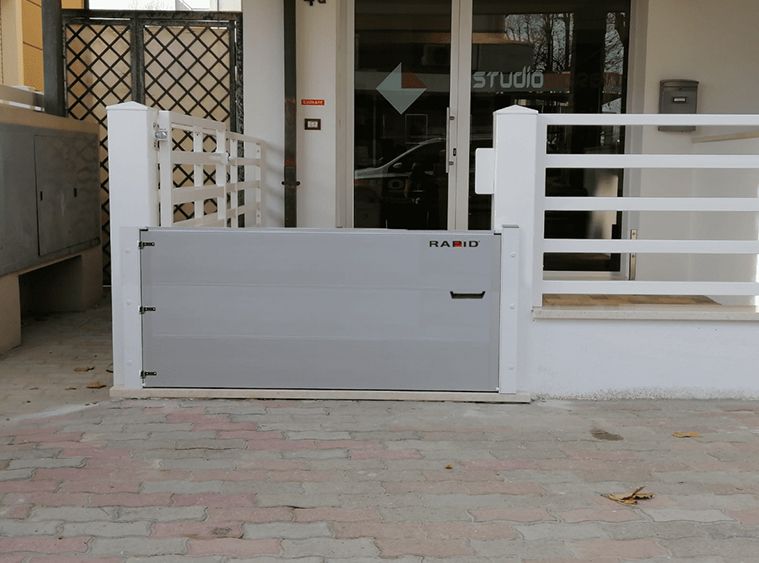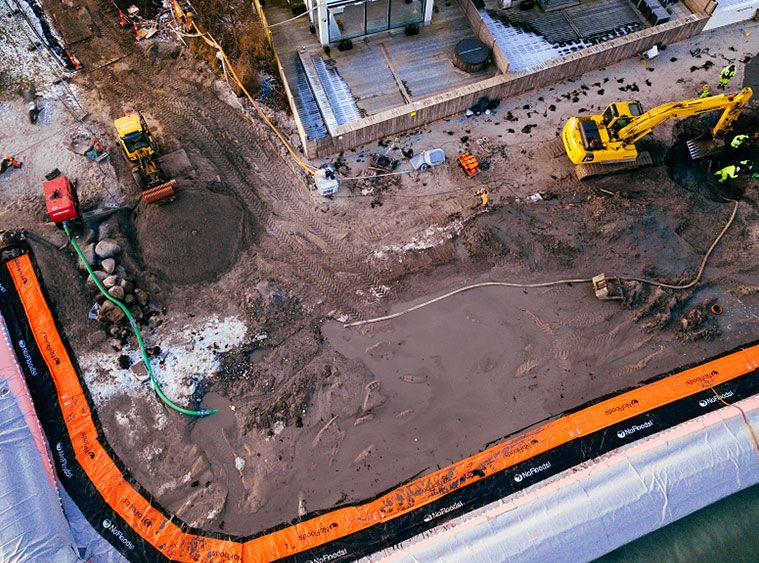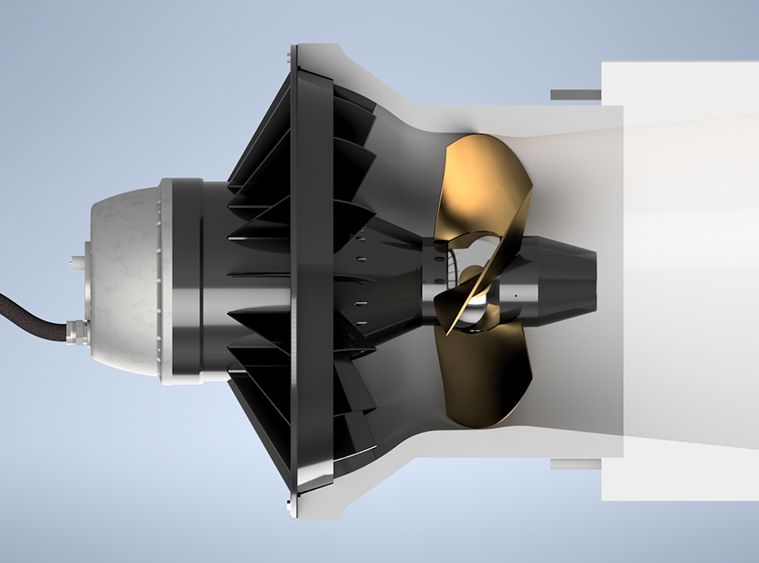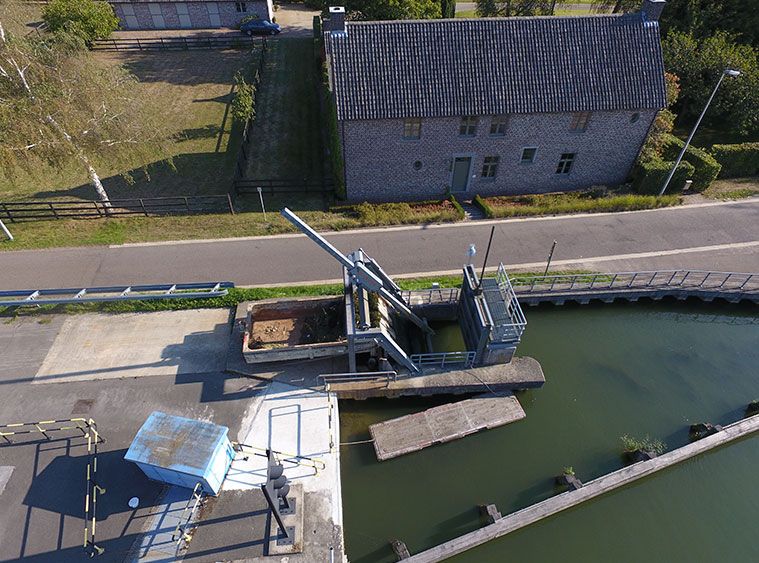Bolina Booms’ permanent floating debris booms are deployed on natural waterways, canals, reservoirs and such like to collect floating debris or to keep debris away from water inlets or water catchment installations.
The screens stop all kinds of floating debris: both debris of natural origin (leaves, dead or uprooted aquatic plants, branches and even entire trees) and debris that ended up in the water as a result of human action (plastics, packaging materials, poles and boards, polystyrene foam and insulation materials, tyres, empty bottles and pots). All of this debris collects up against the debris booms.
In other words, anything that floats sooner or later ends up against the booms.
Recent years have also witnessed a major shift in the way the booms are being used. Whereas previously the booms were largely used to turn away floating debris and to have it run off along with the main flow, nowadays they are increasingly used to collect and remove floating debris from our waterways. This allows for the debris to then be evacuated and recycled in a duly responsible manner. After all, over 80% of the ‘plastic soup’ in our oceans derives from waterways. This increased awareness has ushered in an important change in people’s mindsets. Proof positive being the fact that Ocean Clean-up® uses Bolina Booms’ floating debris booms.
The screens stop all kinds of floating debris: both debris of natural origin (leaves, dead or uprooted aquatic plants, branches and even entire trees) and debris that ended up in the water as a result of human action (plastics, packaging materials, poles and boards, polystyrene foam and insulation materials, tyres, empty bottles and pots). All of this debris collects up against the debris booms.
In other words, anything that floats sooner or later ends up against the booms.
Recent years have also witnessed a major shift in the way the booms are being used. Whereas previously the booms were largely used to turn away floating debris and to have it run off along with the main flow, nowadays they are increasingly used to collect and remove floating debris from our waterways. This allows for the debris to then be evacuated and recycled in a duly responsible manner. After all, over 80% of the ‘plastic soup’ in our oceans derives from waterways. This increased awareness has ushered in an important change in people’s mindsets. Proof positive being the fact that Ocean Clean-up® uses Bolina Booms’ floating debris booms.
The applications are multiple and varied. Just a few examples:
-
Collecting grasses and plants left after verges and river banks have been mowed. As the booms are robustly built, they can also be moved for temporary deployment at different locations. To this end, Bolina Booms’ MDB-600 booms are used.
-
Removing non-native species, invasive plant species or rotting plants and weeds in waterways or water basins in nature parks, drinking water reservoirs, etc.
-
Preventing the debris gratings at pumping stations from getting clogged up with floating debris, to ensure unobstructed evacuation water flow rate.
-
Preventing floating debris from gathering at the inlets of fish passages, so the narrow apertures and spawning grounds remain free from debris.
-
Preventing floating debris and leaves (in autumn) from clogging up / getting into vanes and turbines at locks, weirs, hydroelectric power plants or pumping / lifting stations.
-
As oil containment screens or protection against other floating liquids.
Specific features:
-
Bolina Booms’ patented design has been conceived in such a way that the debris boom automatically adopts a vertical position in the water even sustaining the effects of the water flow.
-
The unique construction of the boom and the floats makes sure the face where the debris is gathered, remains smooth and even at all times. The floats are fitted on the other side, which means they never obstruct floating debris or sustain damage as a result
-
The smooth surface ensures the automatic conduction of the floating debris and litter.
-
Courtesy of the various fitting options, the boom follows level differences, making sure all floating debris is caught. The booms automatically adjust in following the changing water level. Applications in excess of 6 metres under tidal conditions are no exception.
-
Bolina Booms’ debris barriers do not require any maintenance and are particularly durable. The first booms have been in situ in the water for over 20 years.
-
They do not constitute any kind of obstacle to wildlife, fish have free passage swimming underneath, and water birds settle down on them for a rest and effortlessly hop across the 10 cm freeboard.
Our solutions
Interested?
Like to work together? Contact Aqwatt today to find out your suitable ecological solution.


